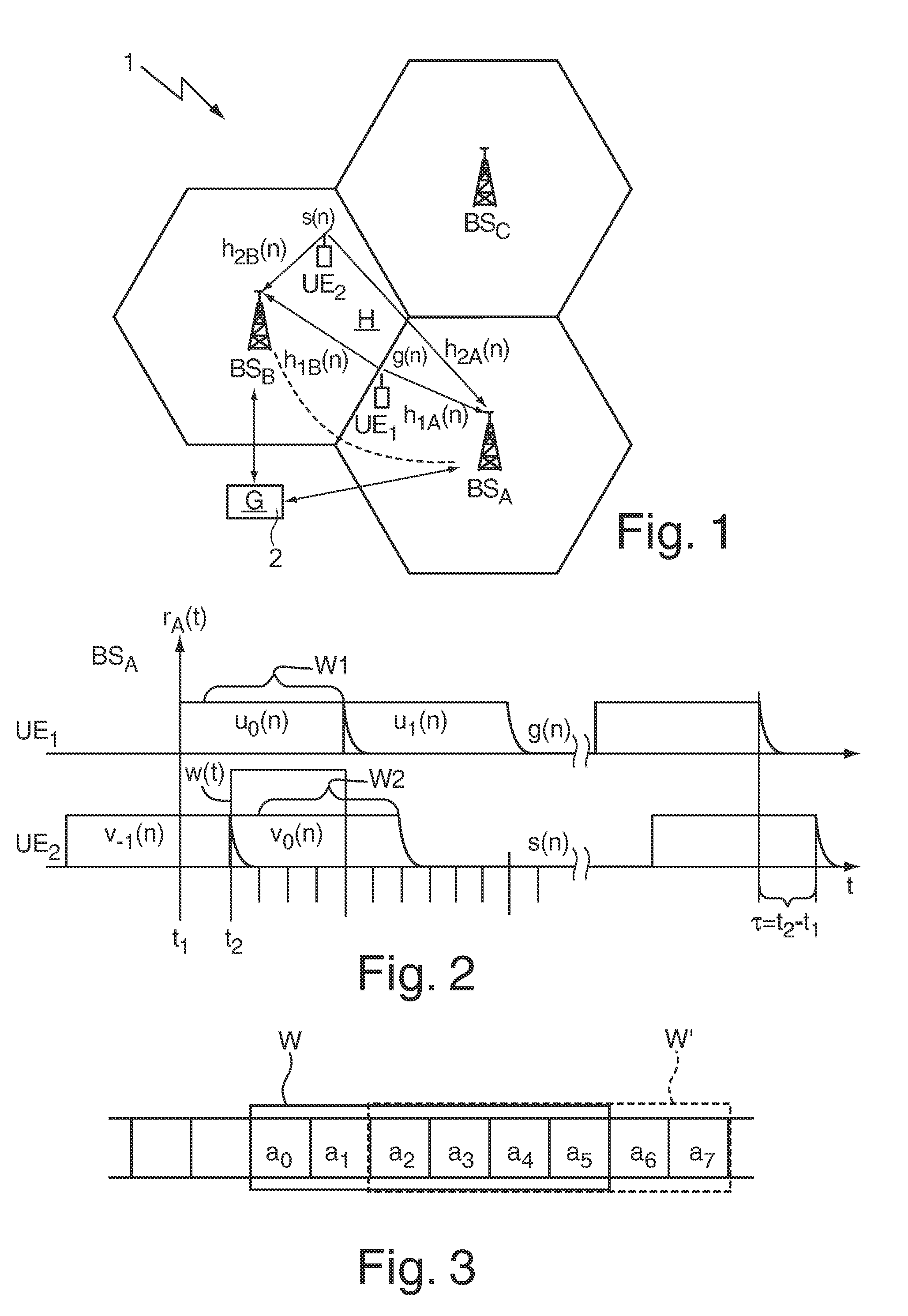Method and processing arrangement for joint processing of uplink data
a technology of uplink data and processing arrangement, applied in the field of methods, can solve problems such as different cell timings, and achieve the effect of increasing overhead
- Summary
- Abstract
- Description
- Claims
- Application Information
AI Technical Summary
Benefits of technology
Problems solved by technology
Method used
Image
Examples
Embodiment Construction
[0031]FIG. 1 shows a wireless communication network 1 which may be in compliance with e.g. the Long-Term Evolution, LTE, standard, the WiMax standard, or another wireless communication standard. The wireless communication network 1 has a plurality of user equipments; however, for the sake of simplicity, only a first and second user equipment UE1, UE2 are shown. The first user equipment UE1 is served by a first base station BSA, and the second user equipment UE2 is served by a second base station BSB of the network 1, respectively. The term “serving” base station refers to the provisioning of downlink data from the respective base station BSA, BSB to the user equipment UE1, UE2, typically the serving base station being the one which is closest to the served user equipment. Each base station BSA, BSB defines a cell, being represented by a hexagon in FIG. 1.
[0032]The first and second user equipment UE1, UE2 transmit their respective uplink data g(n), s(n) to both the first and to the s...
PUM
 Login to View More
Login to View More Abstract
Description
Claims
Application Information
 Login to View More
Login to View More - R&D
- Intellectual Property
- Life Sciences
- Materials
- Tech Scout
- Unparalleled Data Quality
- Higher Quality Content
- 60% Fewer Hallucinations
Browse by: Latest US Patents, China's latest patents, Technical Efficacy Thesaurus, Application Domain, Technology Topic, Popular Technical Reports.
© 2025 PatSnap. All rights reserved.Legal|Privacy policy|Modern Slavery Act Transparency Statement|Sitemap|About US| Contact US: help@patsnap.com



